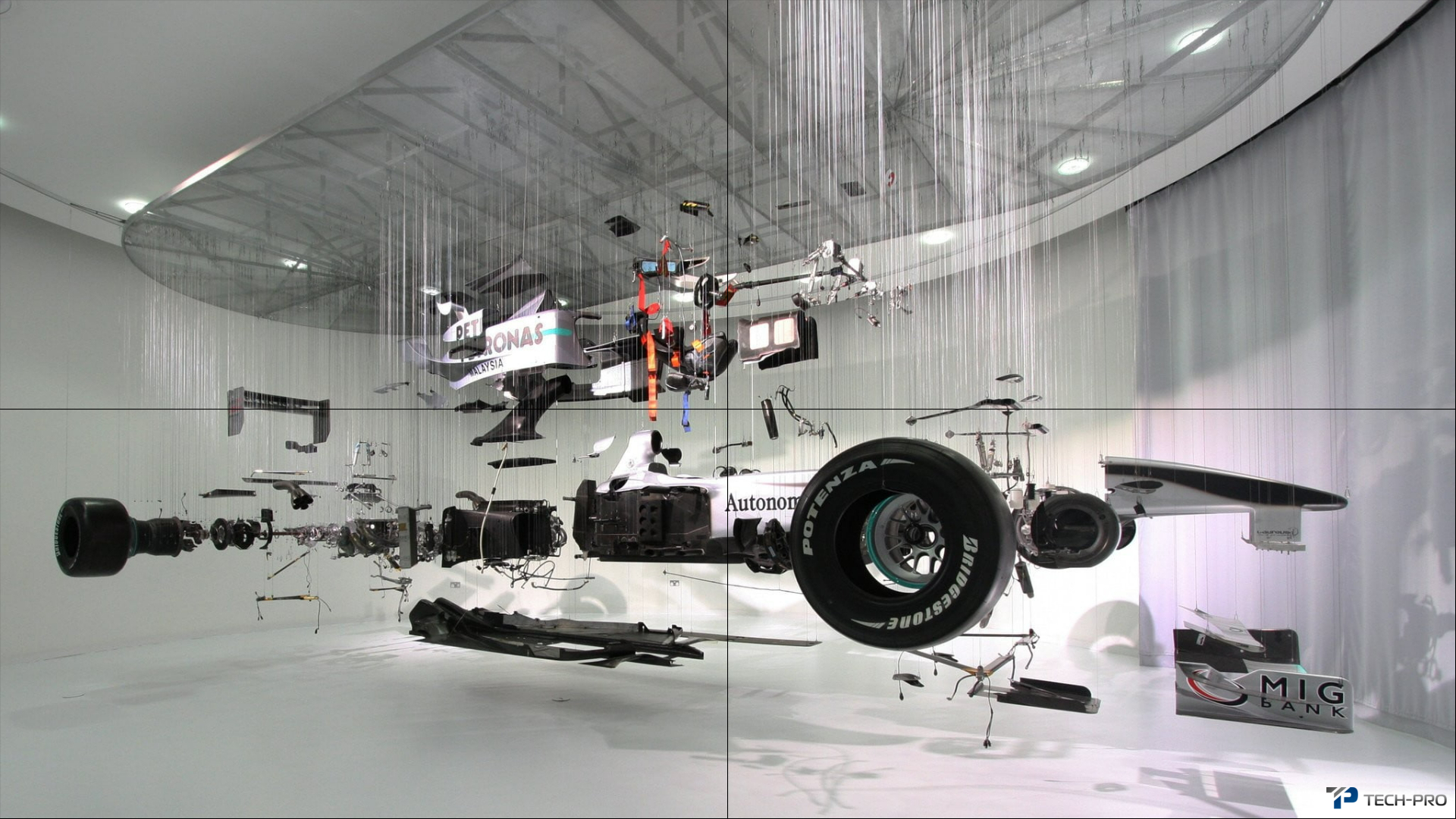
Operating principle and features of video walls
Seamless video walls (LCD) consist of several monitors and are connected to a special controller, which processes and distributes the incoming video signal across all monitors. The controller is also responsible for brightness adjustment, contrast, colors and other image parameters, to ensure uniformity and display quality. Monitors have very thin bezels, which are practically invisible from a distance, so the video wall looks like one big screen.
Seamless video walls (LCD) have a number of features, which distinguish them from other types of video walls:
- High resolution and image clarity, achieved through the use of liquid crystal matrices with high pixel density
- Wide viewing angle and vibrant colors, provided through the use of IPS technology (In-Plane Switching), which improves image quality at different viewing angles
- Low power consumption and long service life, achieved through the use of LED backlighting, which is economical and durable
- Flexibility and scalability, achieved through the ability to connect monitors in different configurations and sizes, depending on needs and conditions
Advantages and disadvantages of seamless video walls (LCD) compared to other types of video walls
Seamless video walls (LCD) have a number of advantages compared to other types of video walls, such as a video projector, plasma panels, LED screens and others. Among them we can highlight:
- no visible joints between monitors, which may interfere with the perception of the image and reduce the aesthetic effect;
- no need for additional space for installation and maintenance, since the video wall can be attached to the wall or ceiling, without taking up floor space;
- no influence of ambient lighting on image quality, since the video wall has high brightness and contrast, independent of light level;
- no need for regular calibration and adjustment, since the video wall has an automatic image correction and matching system.
However, video walls are seamless (LCD) also have some disadvantages:
- high cost and complexity of installation and connection, requires a special controller https://tech-pro.com.ua/catalog/videosteny/kontrollery-dlya-videosten/, cable, fastenings and other equipment;
- high sensitivity to damage and contamination, panel consists of several monitors, which can be damaged mechanically, thermally, chemically or otherwise;
- low versatility and compatibility, Can only work with certain video formats and sources, which must be coordinated with the controller and monitors.
Applications
Seamless video walls (LCD) have a wide range of applications and use cases, depending on goals and objectives, which they must decide. Among them are:
- Реклама и маркетинг – могут служить для привлечения внимания и повышения интереса к продукту, services, brand or company, and also to demonstrate the benefits, characteristics, reviews and other information.
- Образование и наука – для показа образовательных и научных материалов, such as lectures, presentations, graphs, graphics, scheme, video and others.
- Развлечение и искусство – для создания атмосферы, as well as for displaying entertainment and artistic materials, such as movies, music, games, animation, painting and others.
- Безопасность и контроль – видеостена может служить для мониторинга и управления различными процессами, systems, objects and situations, as well as for displaying operational and statistical information, such as surveillance cameras, sensors, signals, data and others.
Seamless video walls (LCD) – это современное и эффективное решение для демонстрации различных видов информации на большом экране без видимых стыков.